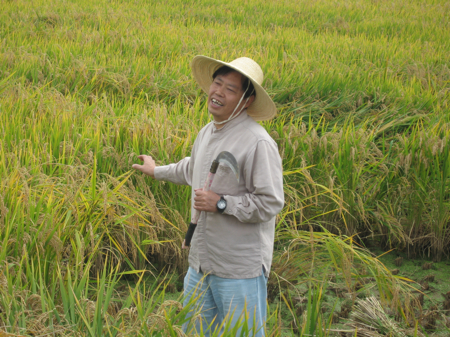
That’s another one to tick off the life list. Above you see Zhu Youyong, who describes himself as a farmer. He happens also to be Distinguished Professor Zhu, President of Yunnan Agricultural College and a hero of mine.
Zhu’s name is associated with a method of growing rice that delivers higher, more stable yields with lower inputs of fungicides and a more stable harvest from year to year. Not bad for an amazingly simple idea. The problem is that traditional landraces of sticky rice, which farmers like to grow and to eat, are susceptible to fungal disease. They also have a nasty tendency to fall over, or lodge, especially when they are carrying a bountiful load of seed. Modern hybrids are disease resistant, and high-yielding, but the taste is not much to write home about. Yields are high, but prices are low. To grow the tasty traditional landraces, farmers need to be able to afford fungicides and they need to be able to overcome their tendency to lodge.
 Further to Luigi’s thoughtful article on how
Further to Luigi’s thoughtful article on how 